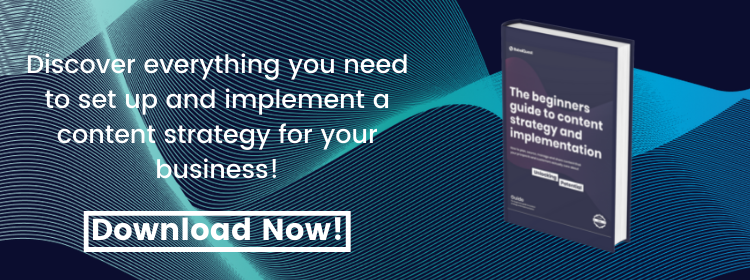"How do we balance technical, features-heavy marketing content with content that tells the real story of our company and ethos?"
This was the roundabout question posed to me by a recent prospect-turned-customer while chatting about his industry and the challenges his business faces as it expands.
It’s always a pleasure to chat with prospects and customers one-to-one about their content marketing, yet as we dug into this particular hurdle, it struck me that other technology and managed service providers might have also wrestled with it (or one very similar).
There are several ways you could approach this challenge. Before I share the answer I gave, it’s worth taking a minute to look at why this prospect — and many others — are impassioned about telling their brand story in the first place.

Technical marketing content: an opportunity to inspire
The market challenge our customer is facing will be familiar to many in the technology space:
"The product/service line we carry is something which in technical terms sounds very similar to the competition as it’s all about the features and benefits. In that context, one ends up competing against global corporations."
A saturated market populated by vendors, partners, and resellers means the tech industry feels this challenge keenly. However, it’s by no means the only market to suffer. Whichever space you’re in, when your offering is similar, if not the same, as the products or services marketed and sold by your competitors (global or otherwise), your brand story could be a differentiator.
"Being a first-gen entrepreneur has been an eventful journey so far, and stories have played a key role in building our business. [...] The biggest challenge now is how we communicate that."
He’s rightly recognised that his company’s ethos, the values underpinning his brand, and the stories that he’s accrued over a decade of growth can, told well, be used to engage a readership, build trust across the buyer’s journey, generate leads that close, and foster meaningful relationships with the customers his business needs to succeed globally.
This is all well and good, except that as he explains it, the marketing content his brand is publishing doesn’t lend itself to that kind of rhetoric. It’s technical and product-focused, made up of features and benefits.
When creating a content strategy to support your inbound marketing activity (and wider business operations — hello, sales and services!), how do you plan to communicate your brand story and values across a piece of technical content without shoe-horning it in?
Telling the only story your customers really care about
As I explained to our prospect, one solution to this content challenge would be to approach your content strategy from the perspective of your customers' stories, not yours.
This perspective provides you with a framework for planning helpful articles or videos that address your customers' challenges, their hurdles, their aspirations, their pain points — all the things that make up their day-to-day stories. They'll relate to these articles, both in subject matter and narrative. Better still, they're actively searching for them. (Intrigued? Find out more ways to create better content.)
By positioning your content in a way that genuinely helps the reader and provides them with value, you'll begin to build up a relationship with a readership of potential prospects and customers. They'll look to your blog or website when they want information or to solve a future challenge. They'll subscribe to receive your emails or newsletters. They recognise you as an authority and, over time, will begin to regard you first before your competitors.
Don't miss these 14 business storytelling tips from novelists, content marketers, and storytellers.
What shape do your customers’ stories take?
Hearing the CEO of a company openly recognise the important role that storytelling has already played in getting his business to where it is today, I couldn’t have been happier. Of course you want to tell that story across your content. And you still can.
If your content is written well, it'll tell your story by virtue of the fact that it is written in your tone of voice, 'authored' by your team, and weaves in references to your experiences, approaches, and core values naturally throughout the text.
Show, don’t tell, or as Anton Chekhov put it, ‘you’ll have a moonlit night if you write that on the mill dam, a piece of glass from a broken bottle glittered like a bright little star and that the black shadow of a dog or a wolf rolled past like a ball’.
(Find out how to achieve this in practice in my three-part article series written for the HubSpot User Blog — or if you're not confident this is within your existing team's capabilities and would like a hand, get in touch.)"
Instead, keep the narrative focus on your customers and their stories.
Get your head around this and even your technical marketing content will stand head and shoulders above those of your competition, who are still churning out generic, otherwise overtly promotional articles that could be carbon copies of each other shouting about how great their product or technology is without thinking about what the customer actually cares about or wants to read.
Storytelling is one piece of the content puzzle. Learn all about how stories fit into your content activities in The Beginner’s Guide to Content Strategy and Implementation.







.png?width=50)

.png?width=50)
.png?width=50)


































